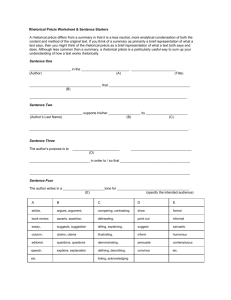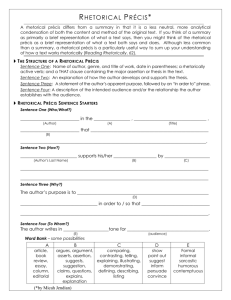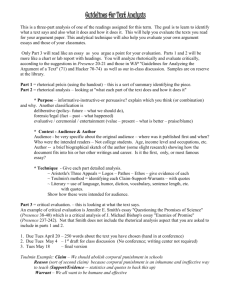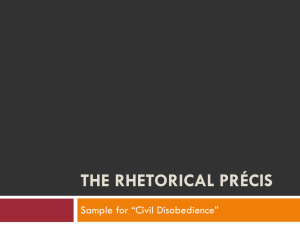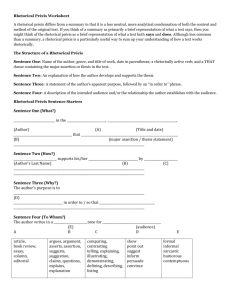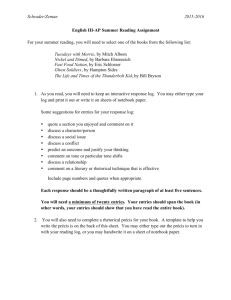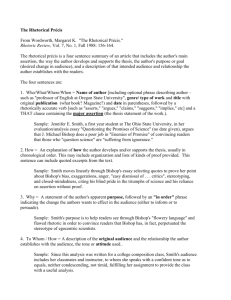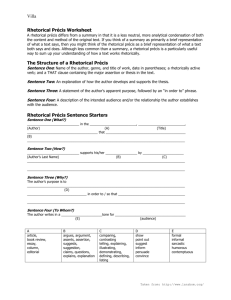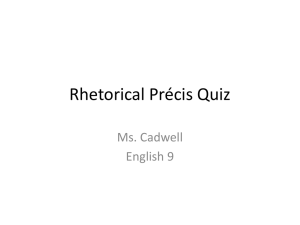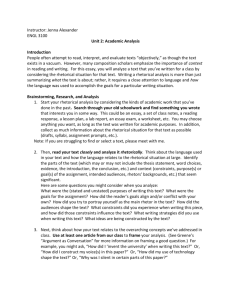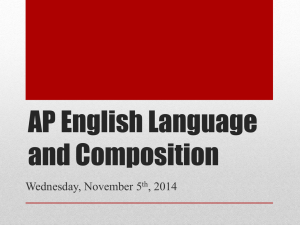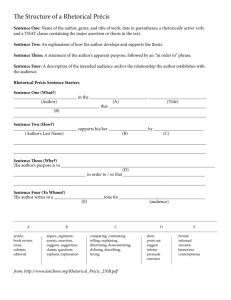Rhetorical Precis - Lakewood High School
advertisement
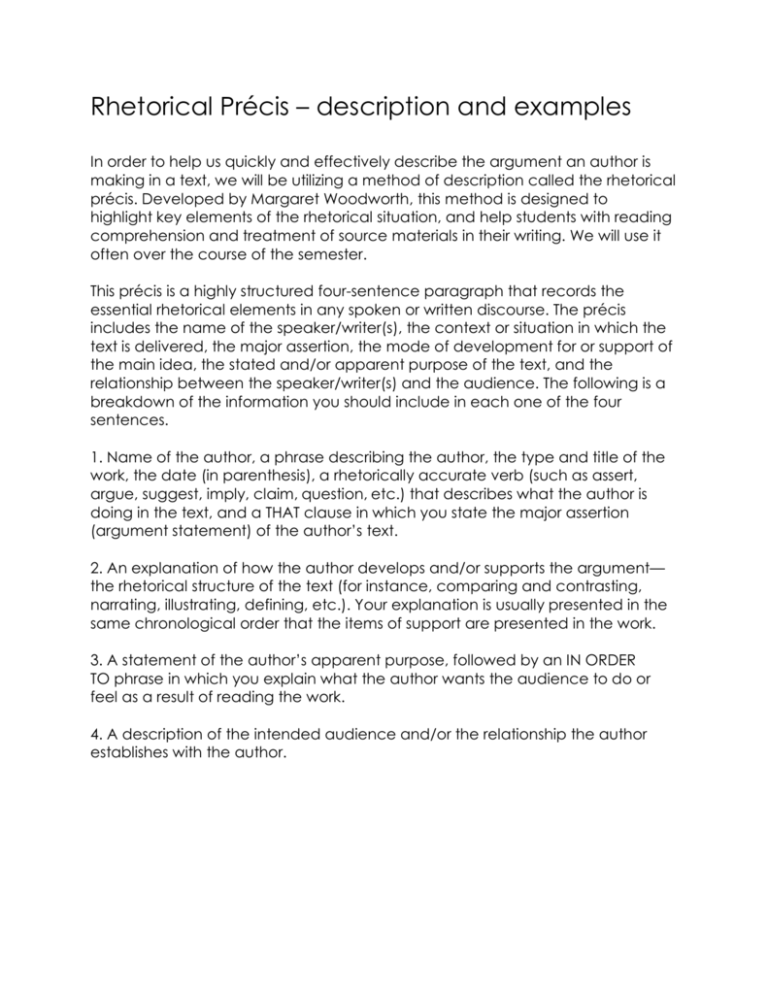
Rhetorical Précis – description and examples In order to help us quickly and effectively describe the argument an author is making in a text, we will be utilizing a method of description called the rhetorical précis. Developed by Margaret Woodworth, this method is designed to highlight key elements of the rhetorical situation, and help students with reading comprehension and treatment of source materials in their writing. We will use it often over the course of the semester. This précis is a highly structured four-sentence paragraph that records the essential rhetorical elements in any spoken or written discourse. The précis includes the name of the speaker/writer(s), the context or situation in which the text is delivered, the major assertion, the mode of development for or support of the main idea, the stated and/or apparent purpose of the text, and the relationship between the speaker/writer(s) and the audience. The following is a breakdown of the information you should include in each one of the four sentences. 1. Name of the author, a phrase describing the author, the type and title of the work, the date (in parenthesis), a rhetorically accurate verb (such as assert, argue, suggest, imply, claim, question, etc.) that describes what the author is doing in the text, and a THAT clause in which you state the major assertion (argument statement) of the author’s text. 2. An explanation of how the author develops and/or supports the argument— the rhetorical structure of the text (for instance, comparing and contrasting, narrating, illustrating, defining, etc.). Your explanation is usually presented in the same chronological order that the items of support are presented in the work. 3. A statement of the author’s apparent purpose, followed by an IN ORDER TO phrase in which you explain what the author wants the audience to do or feel as a result of reading the work. 4. A description of the intended audience and/or the relationship the author establishes with the author. Example: British philosopher, John Stuart Mill, in his essay ―On Nature‖ (1850), argues that using nature as a standard for ethical behavior is illogical. He supports this claim by first giving the common definitions as nature as, ―all that exists or all that exists without the intervention of man‖ and then supplying extensive examples of the daily brutality of nature in the real world. His purpose is to call attention to the flaws in the ―nature as a standard‖ argument in order to convince people to discard this standard and to instead use reason and logic to determine the appropriate ethical standard of action for mankind. He establishes a formal, scholarly tone for the reader of “Nature”—an audience of philosophers, educators, and other interested citizens. Rhetorical Précis Frame 1. (Author’s credentials), (author’s first and last name) in his/her (type of text), (title of text), published in (publishing info) addresses the topic of (topic of text) and argues that (argument). 2. He/she supports this claim by___________, then___________, then_____________, and finally____________. 3. (Author’s last name)’s purpose is to (author’s purpose in writing) in order to (change in reader/society the author wants to achieve). 4. He/she adopts a(n) __________ tone for his/her audience, the readers of (publication) and others interested in the topic of______________. EXAMPLE: “Sheridan Baker, in his essay "Attitudes" (1966), asserts that writers' attitudes toward their subjects, their audiences, and themselves determine to a large extent the quality of their prose. Baker supports this assertion by showing examples of how inappropriate attitudes can make writing unclear, pompous, or boring, concluding that a good writer "will be respectful toward his audience, considerate toward his readers, and somehow amiable toward human failings" (58). His purpose is to make his readers aware of the dangers of negative attitudes in order to help them become better writers. He establishes an informal relationship with his audience of college students who are interested in learning to write "with conviction." NOTE that the first sentence identifies the author (Baker), the genre (essay), the title and date, and uses an active verb (asserts) and the relative pronoun that to explain what exactly Baker asserts. The second sentence explains the first by offering chronological examples from Baker's essay, while the third sentence suggests the author's purpose and WHY (in order to) he has set out that purpose (or seems to have set out that purpose -- not all essays are explicit about this information and readers have to put the pieces together). The final sentence identifies the primary audience of the essay (college students) and suggests how this audience is brought into/connected to the essay's purpose.
